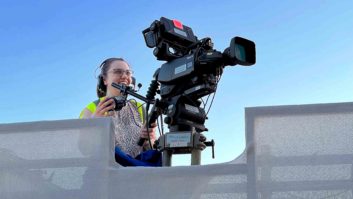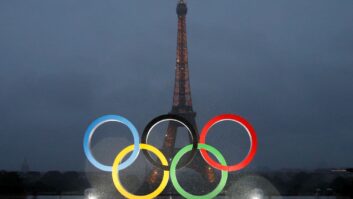
Over the past few years, the media and entertainment industry has started to take the necessary steps towards inclusion and diversity, both in broadcast content and in the workplace. This being said, there is still some way to go, and it’s clear that this shift towards inclusion can only work if all ends of the industry unite on this vision.
Embracing inclusion and diversity in the industry paves the way for a plethora of diverse talent to shine – transforming communities for the better. For the broadcast and media industry, it has never been more important for it to reflect the authenticity of the diverse communities it needs to represent in the content it creates for the audiences it communicates with.
The question is: how can creators, companies and providers start embodying inclusivity in their creative workflows, and most importantly, in the workplace?
The necessity of identity
For individuals of all identities, sexualities and cultures, identity is extremely important. Often, being part of a minority group, individuals can be shrugged off for expressing their identities, leading to a lack of representation, which can impact any industry. For many diverse individuals in media technology, it can seem like a constant battle to fight against the traditional construct of identity in the workplace and to have a voice that challenges the identity ‘norm’ that has been found in content and the media for decades.
Understanding and recognising the importance of identity to diverse individuals is the first step in a much wider journey the industry is taking to inspire inclusion. With the broadcast and media industry founded on creativity, characters and storytelling, it is vital to consider the wide diversity of talent and identity needed to enrich the content viewers consume.
As broadcasters and industry professionals begin to adopt an inclusive approach towards individuals of all identities, it can start to see a more honest representation of the diverse and wonderfully colourful world that encircles the content it creates.
The importance of representation
The broadcast and media industry is driven by creativity, with the potential for thousands of avenues of inspiration from all across the globe. A wealth of identities, cultures and backgrounds contributes towards the content consumed, produced and broadcast on a daily basis – and this is a fact worth celebrating.
For this reason, it is more important than ever for broadcasters, providers and industry professionals as a whole to embrace all types of diversity, including neurodivergence, culture and gender non-conformity, in order to create a safe environment for individuals to thrive. By doing so, it creates a drive to produce content more representative of the audience watching it both present and future.
The next step for industry professionals
Within the broadcast and media industry, there are a few ways to incorporate an inclusive and representational approach. Introducing diversity policies into an organisation is a positive way to inspire inclusion. Not only does it provide a chance to educate teams on the necessities of identity, but it also allows industry professionals to recognise an organisation as a safe space for diversity.
In the workplace, professionals can adopt a similar approach and commit to following diversity policies and making a move towards inclusivity on a company-wide scale. A simple way of introducing gender diversity into an organisation is by including pronouns in email signatures, she/her, he/him, they/them etc. to represent company-wide support of gender non-conforming identities. A similar approach can be taken towards neurodiverse individuals, ensuring that the resources and accessibility they need are present in the place they work, such as freedom to use sensory aids, sunflower lanyards, quiet times, and an understanding of where extra guidance may be needed to support their job.
Also, for individuals of multiple faiths and cultures, ensuring that there is flexibility and inclusivity for individuals to make space for their faith is paramount, such as allowing time within work hours for prayer. Encouraging and promoting diverse representation in director and management roles is another great way to represent inclusion in the workplace.
Away from the workplace, broadcast content itself has the potential to inspire inclusion on a global scale with the additional representation for individuals who identify with neurodiversity, global cultures, LGBTQIA+ and more through characters and storylines. For many younger generations, feeling seen, heard and represented in the media is life-changing, especially for gender-non-confirming individuals, those of diverse cultures, sexualities and disabilities. Introducing more inclusive and diverse characters into content; whether it be movies, TV, or even as simple as a short advertisement, can give individuals of all backgrounds and identities the confidence to express themselves and embrace their identity wholeheartedly.
For broadcast and media, making the shift towards an inclusive and representative industry is not only a change that benefits the professionals working within it, but also the wonderful and unique content it produces.







